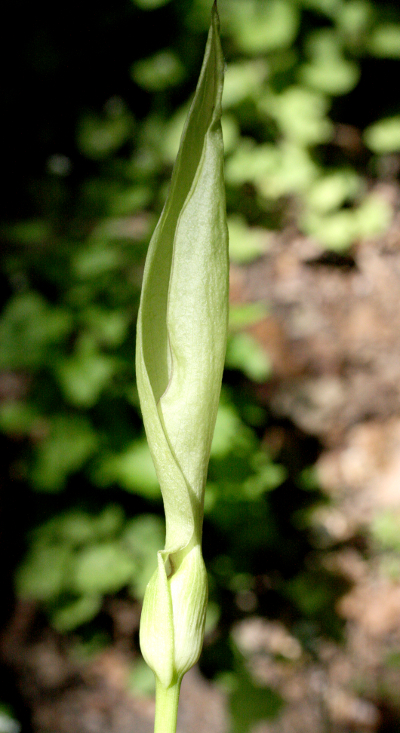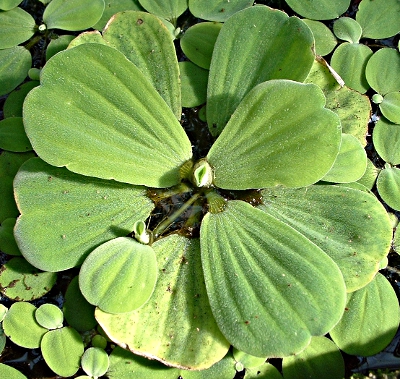Aroideae |

The spathe envelops the spadix initially completely

Pistia stratiotes, the water lettuce, shows the relationship to the duckweeds
The aroideae include 72 genera with over 2600 species around the world, but they primarily occur in the tropics and subtropics. The plants which sometimes growing on tropical trees are mostly herbaceous, sometimes climbing and rarely floating. Often they have a thickened, fleshy root, rhizomes or tubers. The leaves are often arrow-shaped or hastate, heart-shaped or divided, often stalked. They are arranged spirally on the stem or basal.
The inflorescence is formed as a fleshy cob the spadix is called. It is often surrounded by a the spadix sheathing bract, the spathe, which forms a tube at the bottom and at the top a leaf blade. The flowers are unisexual and usually have no petals. The flowers are either female in the lower part of the spadix and male at the top, or male and female flowers occur mixed. Some species have additional sections with sterile flowers. Rarely the plants are dioecious, that is, they bear only male or only female flowers.
The male flowers have 2–12 or more stamens, which are fused, with the exception of one genus, to a so-called Synandrium. Female flowers have superior ovary which mostly consisting of 3 carpels, and frequently staminodes, i.e. sterile stamens. After insect pollination in most cases develop one- to many-seeded berries.
| Floral formula mostly: |
| ♂
* P0 A(2–12) G0 ♀ * P0 A0 G(1–3) superior |
Interesting notes
-
Only in the genera Zamioculas, Gonatopus and Stylochaeton petals are developed.
-
In Philodendron the stamens are not fused to a synandrium.
-
The water lettuce (Pistia stratiotes) is a tropical floating plant.